All carnivorous plants require very pure water with few dissolved salts. Reverse-osmosis, deionized, distilled & rain waters are best. The water vending machines at your local grocery store are also a good option. Beware; PUR & Brita filtered waters are not adequate. Locally; Santa Rosa city, Guerneville city, East Bay MUD, some municipal water & Sacramento area water that comes from the river may be used on carnivorous plants. The Chlorine in city water has no ill effect.
A well fed carnivore requires no fertilizer, but MaxSea 16-16-16 should be used on hungry plants once a month during the growing season at 1/4 tsp/gallon. Sprinkle the plants foliarly, lightly.
You should expect a period of adjustment as your plants get used to their new home. For further information please read “The Revised Savage Garden” by Peter D’Amato.
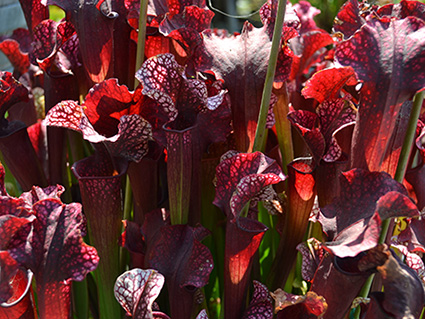
American Pitcher Plant (Sarracenia)
Care is the same as for the Venus Flytrap, see below. Cut back old brown pitchers.
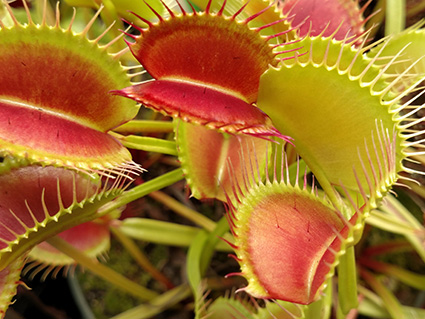
Dionaea M Red Dragon
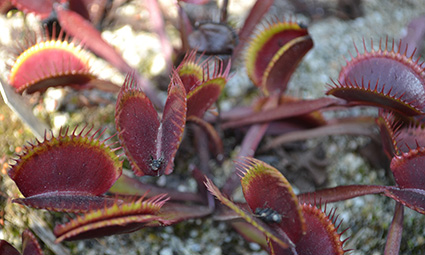
Dionaea M Red Dragon
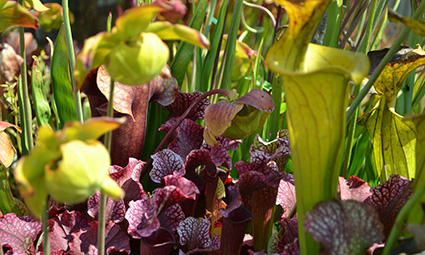
Pitcher Plant in Bloom
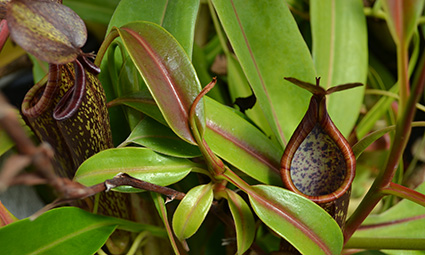
Tropical Pitcher Plant
Grow on sunny windowsills with at least three hours of direct sun, in greenhouses, or in a terrarium with fluorescent light (T-5 fluorescent fixtures are ideal). Set the photoperiod to 12 hours. High humidity is preferred. Highland Nepenthes like day temps in the 70’s-80’s & require a 10-20 degree drop in night temps. Lowland Nepenthes require constant temps in the 70’s-80’s. Pot into a New Zealand sphagnum moss mix with perlite, orchid bark, & tree fern fiber. Do not sit the pots in water for long periods of time as they may rot. Keep soil moist between watering.

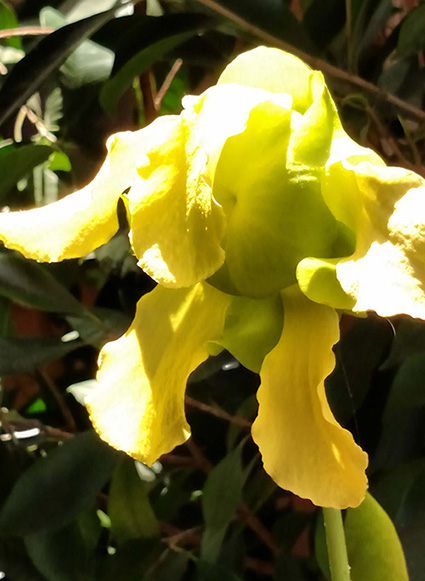
Carnivorous in Bloom
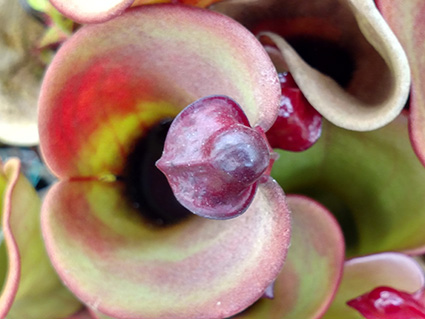
Darlingtonia Californica
Is a kind of pitcher plant native to northern California and southern Oregon.
Its habitat is very restricted. These plants only grow where cold spring water trickles from the ground or in cold water bogs, often in peaty, gravelly soil.
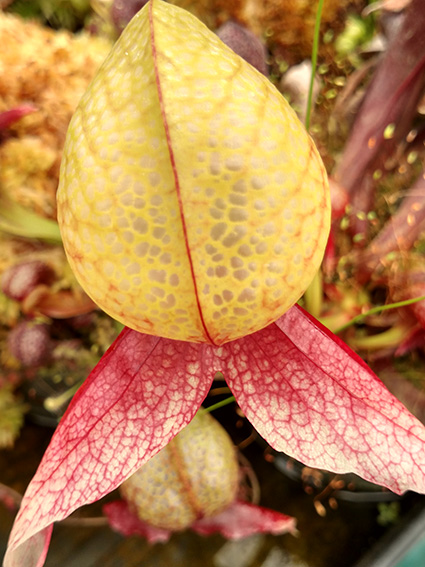
H. Heterodoxa Iosanii
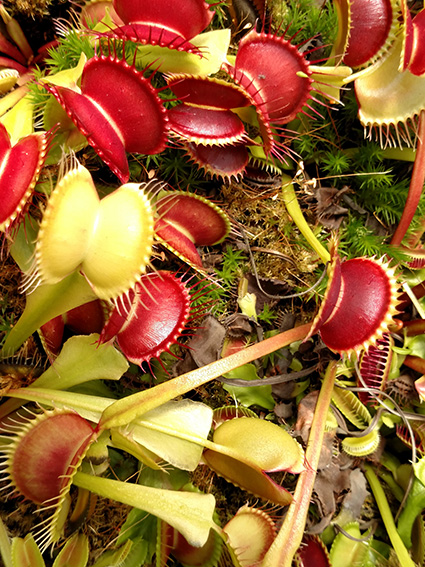
Venus Flytrap (Dionaea m.)
The flytrap is a temperate plant that requires a chilly winter dormancy. In areas with mild winters, they should be grown outdoors year-round in part to full sun. They can take light frost to 20 degrees F. Keep sitting in water all year. They may be grown on a very sunny windowsill spring-summer, but should be put outside from Thanksgiving to Valentine’s Day, so they can go dormant. In areas with long, cold winters flytraps may be over wintered on windowsills in an unheated room or garage.
Transplanting is best done in winter & flytraps should be potted in 1 part Canadian sphagnum peat moss to 1 part hort. sand or 4 parts to 1 part perlite. Cover the drainage holes in the bottom of the pot with a wad of domestic long fibered sphagnum moss so the mix doesn’t run out. Flowers may be cut off in the spring for bigger & more numerous traps.